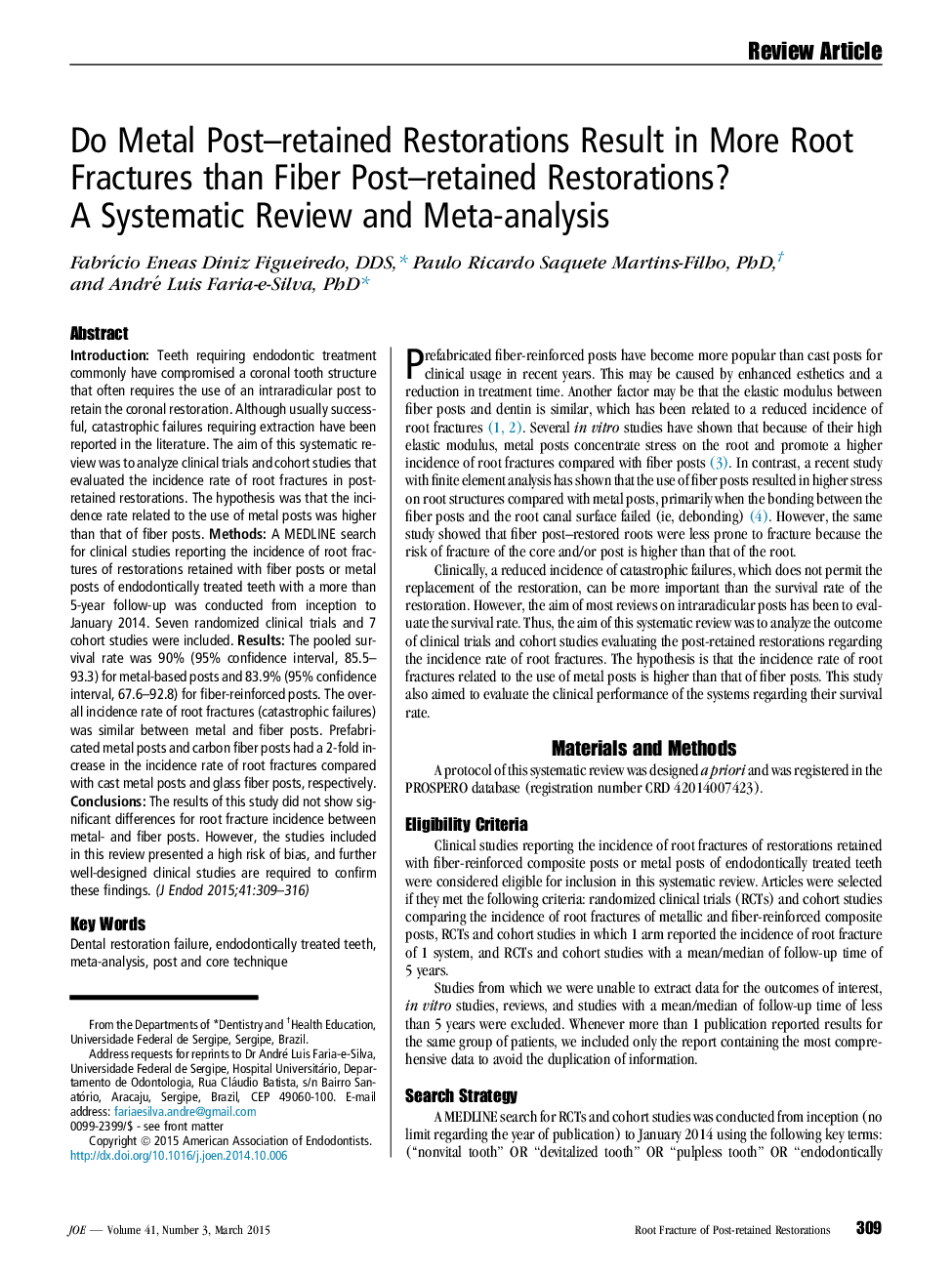| Article ID | Journal | Published Year | Pages | File Type |
|---|---|---|---|---|
| 3148304 | Journal of Endodontics | 2015 | 8 Pages |
•Fiber and metal posts present similar survival rates in clinical studies.•The incidence of root fractures observed among metal and fiber posts was similar.•In clinical trials, metal posts showed a higher incidence of root fractures.•Cast posts result in less root fracture than metal prefabricated metal posts.•The incidence of root fracture was lower for glass fiber than carbon fiber posts.
IntroductionTeeth requiring endodontic treatment commonly have compromised a coronal tooth structure that often requires the use of an intraradicular post to retain the coronal restoration. Although usually successful, catastrophic failures requiring extraction have been reported in the literature. The aim of this systematic review was to analyze clinical trials and cohort studies that evaluated the incidence rate of root fractures in post-retained restorations. The hypothesis was that the incidence rate related to the use of metal posts was higher than that of fiber posts.MethodsA MEDLINE search for clinical studies reporting the incidence of root fractures of restorations retained with fiber posts or metal posts of endodontically treated teeth with a more than 5-year follow-up was conducted from inception to January 2014. Seven randomized clinical trials and 7 cohort studies were included.ResultsThe pooled survival rate was 90% (95% confidence interval, 85.5–93.3) for metal-based posts and 83.9% (95% confidence interval, 67.6–92.8) for fiber-reinforced posts. The overall incidence rate of root fractures (catastrophic failures) was similar between metal and fiber posts. Prefabricated metal posts and carbon fiber posts had a 2-fold increase in the incidence rate of root fractures compared with cast metal posts and glass fiber posts, respectively.ConclusionsThe results of this study did not show significant differences for root fracture incidence between metal- and fiber posts. However, the studies included in this review presented a high risk of bias, and further well-designed clinical studies are required to confirm these findings.
